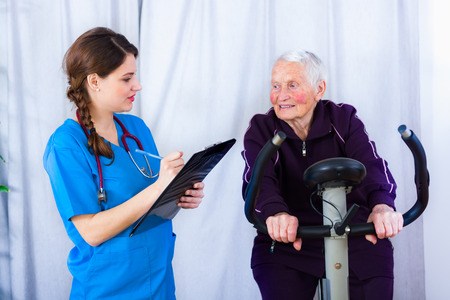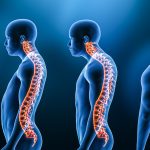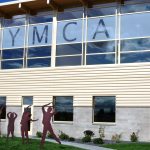
Making a difference in the lives of Parkinson’s patients may be easier than personal trainers realize, with one piece of equipment you’ve probably got right in front of you: a stationary bike. All it takes is some education in the details and willingness to reach out your hand to those that need it.
The venerable Tom Brokaw once said, “It’s easy to make a buck. It’s a lot tougher to make a difference.” What if you held the power to truly make a difference in a client’s life?
A career dedicated to serving others is a most laudable endeavor. As personal trainers, we regularly encounter a variety of individuals, each with a unique agenda. The majority of these clients are easy to work with: highly motivated, eager to train hard, interested in nutritional and behavioral changes for the sake of improving health, etc.
However, at some point during a long career in fitness, some of us may encounter an individual who is facing a serious life-altering illness and is looking to us for support as his life continues down a debilitating, irreversible path. Are you prepared for such a challenge? Do you feel secure in your ability to make a difference?
The Impact Of Parkinson’s Disease
Parkinson’s disease (PD) is a slow-progressing neurodegenerative brain disorder. Over time, the affected individual’s brain gradually ceases the production of a neurotransmitter called dopamine. As dopamine stores diminish, the body possesses less ability to regulate movements and emotions. Symptoms may begin as tremors on a single side of the body, balance issues and challenges with walking.
As posture weakens and tremors cause increased difficulty with balance, activities of daily life become almost impossible to accomplish without assistance. In the latter stages of Parkinson’s disease, stiffness in the lower extremities often renders an individual wheelchair-bound or bedridden, requiring 24-hour assistance with even simple chores and movements.
Currently, there is no known cure for Parkinson’s disease, an illness that affects the lives of 7-10 million individuals worldwide. Medications and physical therapy may offer some relief, but the reality of the life such an individual faces long-term can be overwhelming, and depression often accompanies latter-stage PD. When a sufferer’s family turns to a personal trainer for help, there are steps we can take to harness the body’s limited mobility energy and direct it toward a more life-affirming journey.
Ride vs. Walk
High-cadence cycling is now being recognized as a way to retune central motor control processes and lessen the tremors/rigidity which accompany Parkinson’s disease. The discovery of this form of exercise came about quite surreptitiously. In 2003, Dr. Jay Alberts of the highly acclaimed Cleveland Clinic Lerner Research Institute took on the task of raising awareness for PD by cycling across the state of Iowa.
Rather than riding solo, Dr. Alberts chose instead to traverse the state on a tandem cycle, with a Parkinson’s patient in the rear seat. His original intent by inviting his patient along was to inspire others as well as for companionship. Unexpectedly, his partner actually demonstrated improvements in her condition upon completion of the ride. Attempting to reason through this seemingly miraculous outcome, Alberts deduced that it had much to do with his own cycling pattern. Since his pace was faster than that of his back-seat rider, the patient was forced to increase her speed as well, in an effort to keep pace with Dr. Alberts.
After engaging 26 Parkinson’s patients in an 8-week protocol, consisting of riding stationary cycles 3 times a week with careful monitoring, results were undeniably positive. By being forced to pedal past their comfort level, the test subjects showed increases in connectivity between the regions of the brain responsible for motor ability: primary motor cortex and posterior region of the thalamus. Furthermore, these benefits seem to confer somewhat long-lasting effects.
The Brain Gain
An article featured in the New England Journal of Medicine recounts observations made by researchers Drs. A.H. Snijders and B. R. Bloem regarding one of their patients from the National Parkinson Foundation Center of Excellence Clinic. Similar in fashion to the revelation described by Dr. Alberts, these scientists noted how a late-stage Parkinson’s disease patient with severe motor challenges demonstrated the ability to cycle over 6 miles a day. The question that perplexed the researchers was straightforward: how was the patient able to ride a bicycle and yet remain unable to walk?
The answer may be a bit more complex than what Dr. Alberts purported. Deep in the brain lie the basal ganglia, a group of structures whose job is to facilitate communication as well as motor, mood, and cognitive functions. We can think of these as little data-processing devices that the brain employs as a means of sorting information.
The postulation has 2 working theories: either the basal ganglia itself enabled the cycling, or this network may have been bypassed by other brain systems in an effort to coordinate the movements required for riding a bicycle. These results offer hope that even in the absence of forced-rate exercise, Parkinson’s patients may now have a variety of mobility options. Swimming is currently being considered as a potential beneficial exercise, as well as calming activities such as T’ai Ch’i.
Changing Lives
Imagine being able to offer an otherwise sedentary client the opportunity to engage in truly beneficial cardiovascular exercise, even when walking has ceased to be an option. If this sounds like a powerful statement, consider the impact such a revelation might have on the patient’s outlook on life. We might just have the power to make this happen in many Parkinson’ patients.
REFERENCES
- http://journals.humankinetics.com/doi/abs/10.1123/japa.19.2.87
- http://www.archives-pmr.org/article/S0003-9993(12)00360-7/abstract
- http://www.medicalnewstoday.com/articles/253197.php
- http://www.parkinson.org/understanding-parkinsons/treatment/Exercise/Neuroprotective-Benefits-of-Exercise
- https://www.parkinsonscyclingcoach.com/cycling/
- https://www.ncbi.nlm.nih.gov/pmc/articles/PMC4557094/
- http://www.nytimes.com/2010/04/01/health/01parkinsons.html
- https://www.theatlantic.com/health/archive/2012/11/study-biking-restores-brain-connectivity-in-parkinsons/265563/
- Snijders AH, Bloem BR. Cycling for freezing of gait. N Engl J Med. 2010 Apr 1;362(13):e46. PubMed PMID: 20357278






